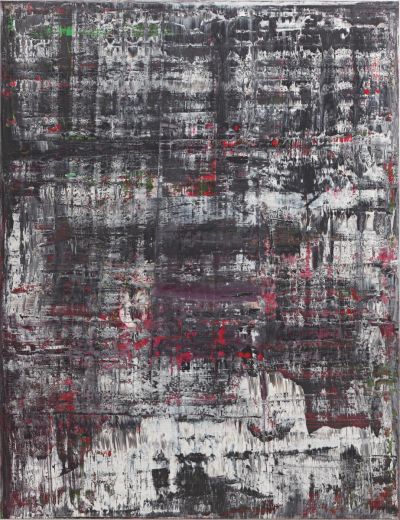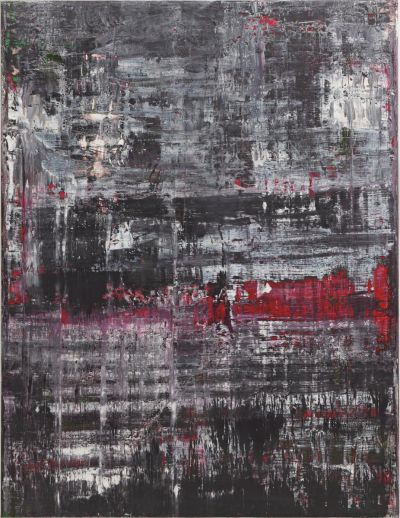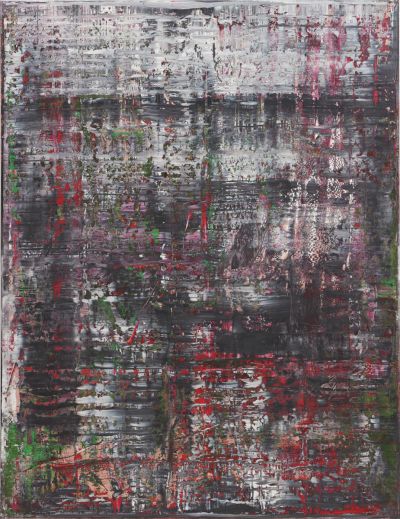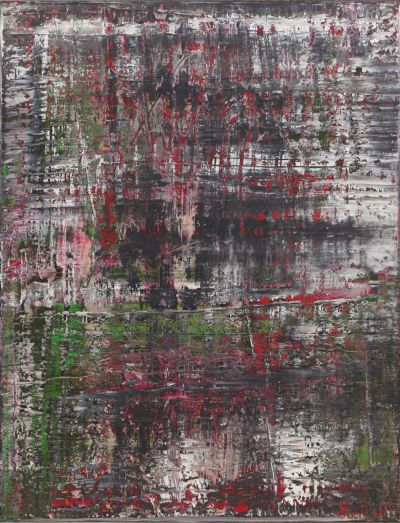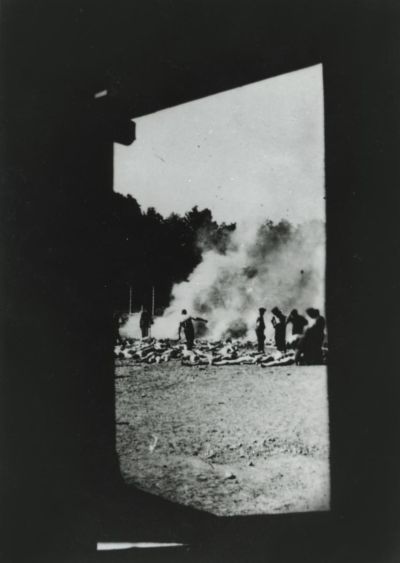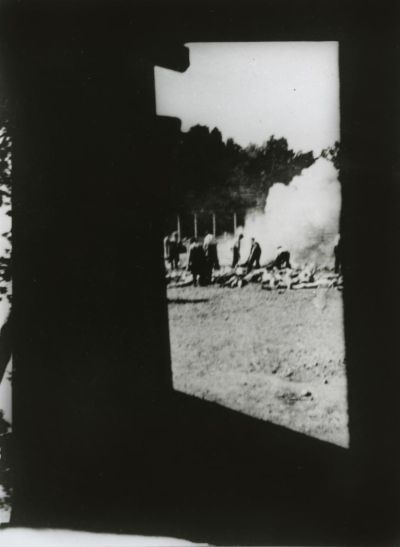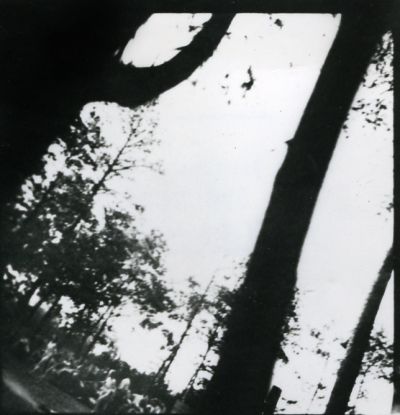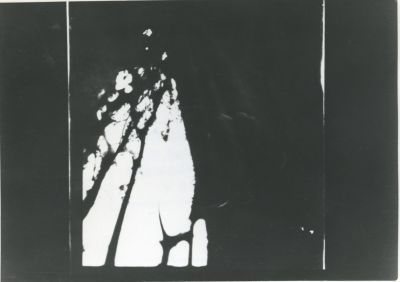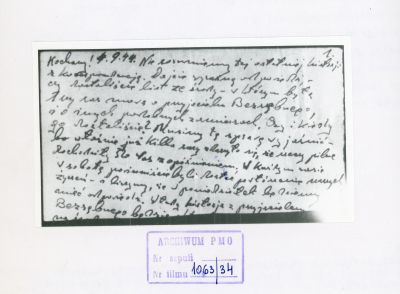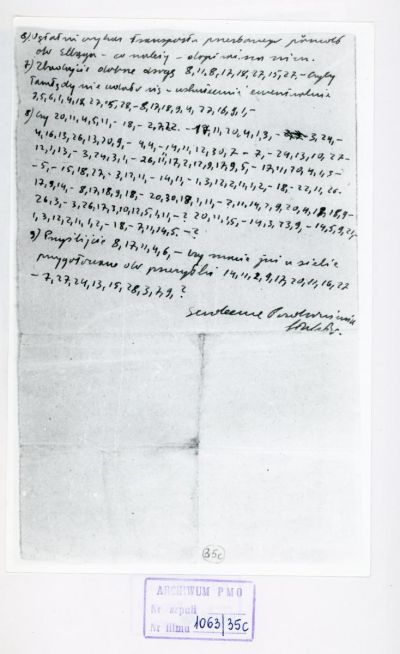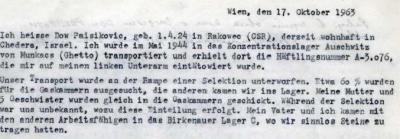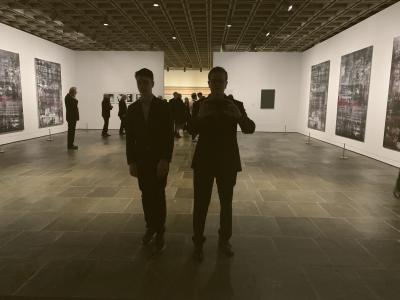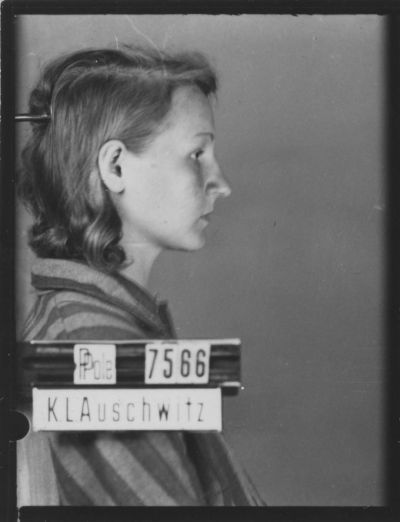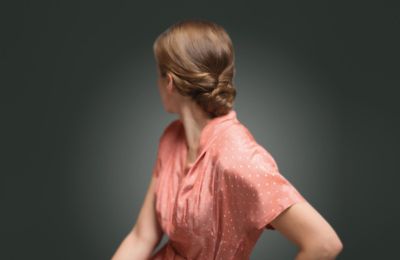“Birkenau” by Gerhard Richter

In 2008 Gerhard Richter first saw four reproductions of the photographs taken at that time in the Frankfurter Allgemeine Zeitung, dated 11th February. Fascinated by the impact of the photographs he decided to include them in his collection of photographs and motifs (the famous Atlas), which constitute, as it were, a documentation of his iconographic memory. He finally completed painted copies of the four photographs and hung them in his studio. Soon after that, he decided to use them as models for a work that was to bear the title Birkenau. After numerous considerations and studies he produced the final version in 2014, consisting of four large-format abstract paintings (oil on canvas, each measuring 260 x 200 cm).
Richter, however, made the Birkenau originals completely invisible by painting over them. Birkenau thus became a purely abstract work. However, the title, the documentation provided by the artist and the museum presentation, in which the work was consequently exhibited along with the photographic originals, make the original templates present in a more than subtle way. The knowledge of the original photos is thus constantly present.
Since the first presentation of the work in the Museum Frieder Burda in Baden-Baden in 2016, the creation process, its impact and the manifold contexts of Richter's Birkenau have been frequently and extensively described, reviewed and interpreted.[8] It is significant, however, "that the work, which is dedicated to the Holocaust, is also a remarkable memorial of the history of Poles in Germany, something that the artist has personally acknowledged.[9] Without the Polish resistance movement Richter's Birkenau would not have existed.
By covering the visible source of this memory with a painterly gesture, Richter has constructed a place of remembrance and stimulated a debate on the subject.[10] He creates a balance between the memory and the aesthetics of the abstract, which allows a peculiar double existence of both areas. Out of respect for what happened in the Birkenau camp, Richter does not show the harrowing documents, but makes them tangible and tangible in his paintings through artistic means. The artistic work entitled Birkenau contains the camp Birkenau, "present but not visible".[11]
The artist addresses what is probably the darkest chapter in human history and takes viewers on a tightrope walk between memory and aesthetics, cruelty and beauty, bewilderment and curiosity, leading them to the borderline between what is obvious and what is being repressed. However, in the end aesthetics win out: the painting is what Richter as an artist has to contribute to this theme. It is an "image in spite of everything," which, as Richter observed, is primarily intended to provide us with solace.[12]
[8] See above all: Gerhard Richter, Birkenau, Museum Frieder Burda, Köln 2016 and Benjamin H.D. Buchloh, Gerhard Richters Birkenau-Bilder, Köln 2016
[9] Jacek Barski: Conversations with Gerhard Richter on 12. and 26. March 2018
[10] Paul Valéry (1871-1945) referred to the paradox of memory in his Cahiers (1921-1922): "Sensitivity is the instantaneous / incessant / phenomenon that charges the'memory' in a certain direction - through quanta; and that discharges it again - again through quanta - in the same direction. If the charge'memory' itself is felt, then we are dealing with the phenomenon of expectation. Waiting means perceiving an upgrowth. However, the discharge not only reduces the charge, but also allows it to grow or at least makes it more suitable for all dischargers... Memory is therefore not accumulation, but construction. The content of memory is an act - a current event"; Paul Valéry, Cahiers, Paris 1973-1974, quoted from the German edition: Frankfurt am Main, 1989, volume 3, p. 441.
[11] "Present but not visible" is part of the postmodern discourse as a dictum at the latest since 2006 (year of publication of Thomas Pynchon's Against the Day, New York, 2006, German Edition Against the Day, see here p. 593).
[12] In the place indicated
